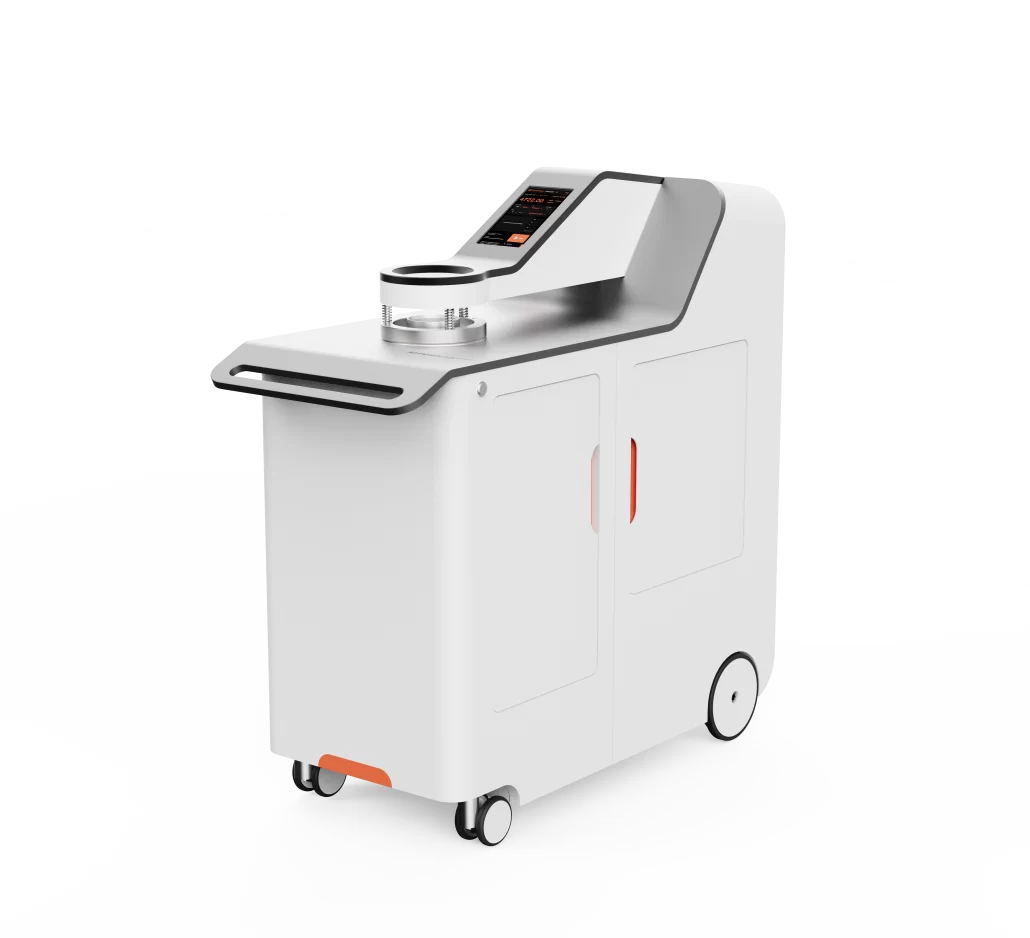As the weather turns warmer, the temperature rises. People wear thinner clothes. They wear fewer of them. This makes air permeability especially important! Good, breathable clothes can evaporate body sweat. So, fabric breathability is key to fabric comfort.
Application of air permeability in textile industry
Garment industry:
Air permeability is an important comfort indicator for textiles. This is especially true for outdoor sportswear, sports shoes, and similar products. The air permeability test of fabric to verify if they can provide good air permeability. The air permeability tester for textiles is the applicable machine for conduct fabric’s air permeability test. that is to absorb moisture and perspiration and stay dry.
There are many permeability testing machines for textile testing. However, manufacturers use air permeability test apparatuses for products such as bedding, curtains, and furniture coverings, to measure their air permeability. This helps us evaluate their comfort and suitability.
Medical Supplies:
Medical textiles, like surgical gowns and masks, need to have good air permeability. This ensures that medical staff stay comfortable in a long workday. Air permeabilitytesting measures how well a product lets gas exchange. It can prevent bacterial and viral infections.
Sports equipment:
Some sports equipment, like sports shoes and caps, also use air permeability testing. It ensures their air can circulate well.
Application of air permeability in other industries
Automotive interior materials: We measure the air permeability and air resistance of materials in car interiors. Examples include polyurethane, PVC, leather, textiles, and nonwovens.
Building materials: We measure the air permeability of building materials like stone and concrete. This helps us see how they can affect indoor air quality.
Packaging materials:Many special packaging materials, like freshness packaging, need some air permeability. This is to keep the package contents high quality.
Electronics:Some electronic components need good air flow. It ensures the equipment works.
Comparison of different test methods for air permeability
Nowadays, there are quite a few standards and methods for fabric air permeability testing. Below we bring you the commonly used standards and the required air permeability meter, also called air tightness testing equipment for your reference. We also cover comparisons of fabric air permeability testing at home and abroad. These standards come from different countries or organisations, such as ISO, GB, BS, ASTM and so on. Each standard may apply to different materials or products. For example, non-woven materials and textiles. Each standard may use different testing principles. For example, the air flow method or the water vapor transmission method. Most standards use similar testing principles. But, the required test equipment may vary, depending on the standard’s requirements.
1. ISO 9073-15 ISO 9237
Application:It is suitable for testing the air permeability of non-woven materials.
Active sentence:Manufacturers use these materials in filter media, thermal insulation, and other applications.
Test Principle:We use the gas flow method. It measures the gas flow rate through the sample. This tells us about its permeability.
Testing equipment:The air permeability tester includes parts. These parts are the gas source, testing fixture, and flow meter.
2. GB/T 5453 GB/T 24218.15
Scope of application:Used to evaluate the air permeability performance of textiles, including fabrics and garments.
Testing principle:We use the gas flow method or water vapour transmission method. They measure the rate of gas or water vapour passing through the sample. They do this to assess the sample’s air permeability.
Testing equipment:Each method requires different equipment. For example, the airflow method needs air permeability testing equipment. The water vapor transmission method needs humidity control equipment.
3. BS 3424-16 BS 6F 100 3.13
Application:To assess the breathability of fabrics, e.g. fabrics, garments, etc.
Test Principle:Airflow method or water vapour transmission method.
Testing equipment: Different tests require different equipment. For example, the airflow method needs air permeability testing equipment. The water vapor transmission method needs humidity control equipment.
4. ASTM D737
Scope of application:Mainly used to assess the air permeability of fabrics.
Test Principle:The airflow method measures gas flow through a sample. It evaluates air permeability.
Test Equipment:Air permeability tester including gas source, test fixture, flow meter, etc.
5. JIS L1096 Item 8.26 Method C
Application:It is widely used in the Japanese textile industry. It is mainly for measuring the air permeability of fabrics.
Test Principle:Measurement of the air permeability of fabrics by the airflow method.
Test equipment:Air permeability tester including air source, test fixture and flow meter.
Among them, ISO 9237 and ASTM D737 two standard methods are widely used. GB/T 5453-1997 applies to many types of textile fabrics. These include industrial fabrics, non-textile fabrics, and other breathable textile products. In the test, there is a difference in pressure drop for taking fabrics and industrial fabrics. The difference is subtle. For taking fabrics, the pressure drop is 100Pa. For industrial fabrics, the pressure drop is 200Pa. GB/T5453-1985 describes the “fabric permeability test method” for air permeability. It measures the permeability of textiles. And it does this by measuring the volume of air flowing through a unit area of fabric. It does so per unit of time under a specified pressure difference.
The revised standard is GB/T 5453-1997. It uses air permeability to show fabric air permeability. It defines air permeability as the rate of airflow passing through a specimen. This happens under set conditions of area, pressure drop, and time. ASTM D737 is different from the above standards. It’s different in terms of scope, temperature, humidity, test area, and pressure. Experts consider the actual import and export textile trade. We propose using different samples. We will use them to compare the conditions of ISO 9237 and ASTM D737. The conditions include temperature, humidity, test area, and pressure difference. The goal is to select the suitable and representative conditions. Then, we will establish an industry standard for trade.
For more details about air permeability test standards, please don’t hesitate to contact us.
Comparison of test results
The results of fabric air permeability depend on the testing methods. The tests used four different methods: ISO 9237, GB/T 5453, ASTM D 737, and JIS L 1096. The air permeability is the same for GB/T 5453 and ISO 9237. It is smallest for GB/T 5453 (ISO 9237) and largest for JIS L 1096. For ASTM D 737, it is in the middle. The air permeability tested by ASTMD 737 is in the middle. In the same test area, air permeability rises with the rise of the pressure drop. The pressure drop is directly proportional to the number of times it increases. In summary, only the product’s characteristics determine the right tests. Evaluators need to assess the fabric’s air permeability.
Detailed explanation of test steps (take GB/T 24218-15 as an example)
1.Decide the sampling by the product standard. Or, by asking related parties. To test big nonwoven fabrics, choose at least 5 big nonwoven fabric parts for the equipment. For equipment that can’t test large fabrics, cut at least 5 100mmX100 mm pieces. Use cutting moulds or templates.
2.Move the specimen from a normal environment to a standard one. Do this according to the rules of GB/T6529. This will adjust the humidity to equilibrium.
3.Hold the edge of the specimen to avoid changing the natural state of the nonwoven test area.
4.Put the specimen on the test head. Fix it with the clamping system to stop twisting or edge gas leaks during the test. Gas permeability differs between the front and back of the specimen. The report should specify which side they tested. For coated specimens, place the specimen coating side down. Put it towards the low pressure side. This prevents edge gas leakage.
5.Switch on the vacuum pump. Adjust the air flow rate until you reach the needed pressure difference. It should be 100 Pa, 125 Pa, or 200 Pa. On some newer instruments, the test pressure value is digitally set. The device then digitally shows the pressure difference. It is between both sides of the measurement aperture. The chosen test unit shows for direct reading.
6.If you use a manometer, wait until the pressure value stabilizes. Then, read the permeability value in L/(cm-s).
The AirFicient Air Permeability Tester meets standards such as GB/T5453, ISO 9237, ISO 9073:15, JIS L1096 Item 8.26 Method C, BS3424-16, BS 6F 100 3.1, NWSP 070.1.RO(15), and GB/T 24218.15. The test is quick and easy. You can pick the test standard and unit on the operation screen. The test will then identify the ranges of the test fixture head, start the test, and produce results.
For more information about air permeability tester price, please contact us below:
What’s App: +86 180 2511 4082
Tel: +86 769 2329 4842
Fax: +86 769 2329 4860
Email: medium@chiuvention.com



